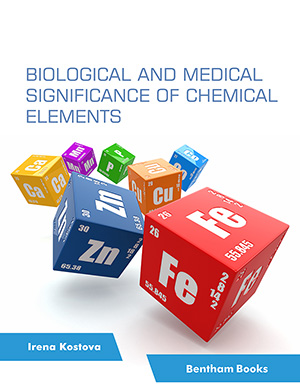Abstract
Background: The H2O–Ar system has attracted significant interest in recent years because it is an important model to study inelastic scattering between atoms and triatomic molecules. A high-accuracy intermolecular potential energy surface (IPES) is the foundation for theoretical study on molecular collision dynamics for H2O–Ar. In addition, dipole moment surfaces (DMSs) are one of the prerequisites for spectral simulation.
Objective: This study aimed to obtain a full-dimensional intermolecular potential energy surface and dipole moment surfaces for the van der Waals complex H2O–Ar.
Methods: In this study, ab initio energy points were computed at the frozen-core (FC) explicitly correlated coupled-cluster [FC-CCSD(T)-F12a] level, with the augmented correlation-consistent polarized valence quadruple-zeta basis set plus bond functions. The permutation invariant polynomial neural network (PIP-NN) approach is adopted to fit the IPES, while the DMSs are constructed at the MP2/AVTZ level and fitted by the NN approach.
Results: With a root-mean-square-error (RMSE) of 0.284 cm-1, the IPES can accurately describe the motion of the H2O–Ar complex between R = 4 and 20 a0 in the energy range up to 10000 cm-1. The fitting errors of all the data points are 6.192 and 6.509 mDebye for the X and Z components, respectively. The global minimum of -140.633 cm-1 has the plane geometry, while the dipole moment of H2O–Ar is 1.853 Debye at the equilibrium structure.
Conclusion: In summary, we report a full-dimensional intermolecular potential energy surface for H2O–Ar. The IPES precisely reproduces CCSD(T)-F12a electronic energies with a large basis set. The corresponding dipole moment surfaces have also been reported. In comparison with previous work, the employment of the high-level ab initio method will make our IPES more reliable. Several typical 2D contour plots of the IPES and DMSs are also shown. The argon atom has a weak effect on the dipole moment of the H2O–Ar complex. The FORTRAN codes to generate 6D potentials and dipole moments reported here are available on request from the authors.
Keywords: Quantum dynamics, intermolecular potential energy surface, dipole moment surface, ab initio calculation, machine learning, neural network, van der Waals complex, intermolecular energy transfer, single- and double-excitation coupled cluster approach.
[http://dx.doi.org/10.1098/rsta.2017.0150] [PMID: 29431678]
[http://dx.doi.org/10.1093/mnras/sty1177]
[http://dx.doi.org/10.1093/mnras/stab2381]
[http://dx.doi.org/10.1126/science.abm5536] [PMID: 34793226]
[http://dx.doi.org/10.1126/science.abb8020] [PMID: 32381705]
[http://dx.doi.org/10.1080/13647830.2019.1662490]
[http://dx.doi.org/10.1038/s41467-019-12691-8] [PMID: 31604950]
[http://dx.doi.org/10.1088/1361-6463/aad532]
[http://dx.doi.org/10.1016/j.proci.2016.07.100]
[http://dx.doi.org/10.1093/mnras/stu2287]
[http://dx.doi.org/10.1063/1.4939089] [PMID: 26747800]
[http://dx.doi.org/10.1016/j.asr.2014.12.002]
[http://dx.doi.org/10.1063/5.0047718] [PMID: 33858145]
[http://dx.doi.org/10.1093/mnras/stab453]
[http://dx.doi.org/10.1016/0022-2852(90)90310-M]
[http://dx.doi.org/10.1063/1.464923]
[http://dx.doi.org/10.1063/1.472611]
[http://dx.doi.org/10.1063/1.454789]
[http://dx.doi.org/10.1063/1.458459]
[http://dx.doi.org/10.1063/1.461318]
[http://dx.doi.org/10.1063/1.460308]
[http://dx.doi.org/10.1016/j.jms.2016.04.010]
[http://dx.doi.org/10.1016/0301-0104(91)80025-D]
[http://dx.doi.org/10.1063/1.473051]
[http://dx.doi.org/10.1063/1.481344]
[http://dx.doi.org/10.1063/1.1697394] [PMID: 15267769]
[http://dx.doi.org/10.1016/S0009-2614(02)00298-1]
[http://dx.doi.org/10.1063/1.4990738] [PMID: 28688396]
[http://dx.doi.org/10.1016/j.cplett.2015.03.032]
[http://dx.doi.org/10.1063/1.468389]
[http://dx.doi.org/10.1063/1.1899157] [PMID: 16161582]
[http://dx.doi.org/10.1063/1.463431]
[http://dx.doi.org/10.1016/j.jms.2014.04.005]
[http://dx.doi.org/10.1016/j.jms.2011.12.004]
[http://dx.doi.org/10.1063/1.461320]
[http://dx.doi.org/10.1021/jp908450c] [PMID: 20669928]
[http://dx.doi.org/10.1063/1.4794161] [PMID: 23514489]
[http://dx.doi.org/10.1063/1.430786]
[http://dx.doi.org/10.1121/1.381051]
[http://dx.doi.org/10.1063/1.435379]
[http://dx.doi.org/10.1063/1.456122]
[http://dx.doi.org/10.1063/1.458963]
[http://dx.doi.org/10.1016/0009-2614(90)85009-2]
[http://dx.doi.org/10.1063/1.1649726] [PMID: 15267435]
[http://dx.doi.org/10.1016/0009-2614(92)85658-W]
[http://dx.doi.org/10.1021/jp990054z]
[http://dx.doi.org/10.1063/1.478762]
[http://dx.doi.org/10.1063/1.468478]
[http://dx.doi.org/10.1063/1.3009270] [PMID: 19045406]
[http://dx.doi.org/10.1063/1.1504703]
[http://dx.doi.org/10.1063/1.459857]
[http://dx.doi.org/10.1063/1.460092]
[http://dx.doi.org/10.1063/1.2817618] [PMID: 18081383]
[http://dx.doi.org/10.1063/1.3054300] [PMID: 19206955]
[http://dx.doi.org/10.1063/1.464303]
[http://dx.doi.org/10.1063/1.4817187] [PMID: 23927248]
[http://dx.doi.org/10.1063/1.4832697] [PMID: 24289340]
[http://dx.doi.org/10.1063/1.4887363] [PMID: 25053303]
[http://dx.doi.org/10.1016/S0009-2614(98)00866-5]
[http://dx.doi.org/10.1080/0144235X.2016.1200347]
[http://dx.doi.org/10.1063/1.1398102]
[http://dx.doi.org/10.1080/00268977000101561]
[http://dx.doi.org/10.1080/01442350903234923]
[http://dx.doi.org/10.1021/ct9004917] [PMID: 26614316]
[http://dx.doi.org/10.1109/72.329697] [PMID: 18267874]
[http://dx.doi.org/10.1063/1.451775]
[http://dx.doi.org/10.1063/1.460471]






























